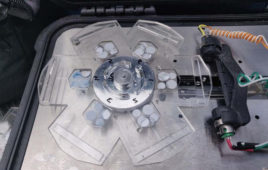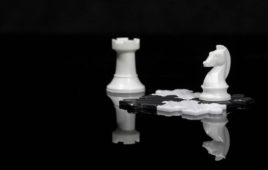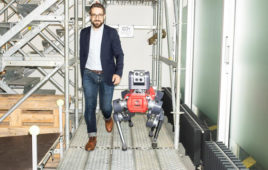A question of torque – Inspection robots for pipes and ducts, rescue robots in disaster areas, or humanoid robots – they all have one thing in common: They are mobile robots that aid humans. We explain some of their requirements for drive technology in detail.
 One of the basic requirements for the drives of mobile robots is high power density. For robots, this usually means high torque while taking up the smallest possible space. As far as speed is concerned, speeds below 1000 min-1 are generally sufficient in robotics, even for fast movements.
One of the basic requirements for the drives of mobile robots is high power density. For robots, this usually means high torque while taking up the smallest possible space. As far as speed is concerned, speeds below 1000 min-1 are generally sufficient in robotics, even for fast movements.
DC motors: High power density
DC motors are usually the first choice when high power density is required. Their high startup torque makes them ideal for acceleration applications. “Ironless” maxon motors with and without brushes are typical examples of these DC motors. They are highly efficient. These high-speed motors are generally long and narrow, with relatively low torque. To achieve the high torques required in robotics, the motors are combined with gearheads.
If linear motion with high force is required, this can be achieved through appropriate mechanical design with a high reduction ratio without sacrificing the benefits of high-speed motors. Examples include low-pitch spindles and cable drives with a small deflector pulley.
Multipole motors: Higher torque
Higher torques can be achieved by increasing the number of magnetic poles. maxon EC-4pole motors are a first step toward multipole motors. In this case, additional magnetic poles also mean a more complex design and assembly. Conventional brushless DC motors with a slotted iron core are often designed with multiple poles and, as a result, tend to provide lower speeds at higher torques.
Read more in the latest issue of „driven“.
Filed Under: maxon Driven, Robotics • robotic grippers • end effectors




